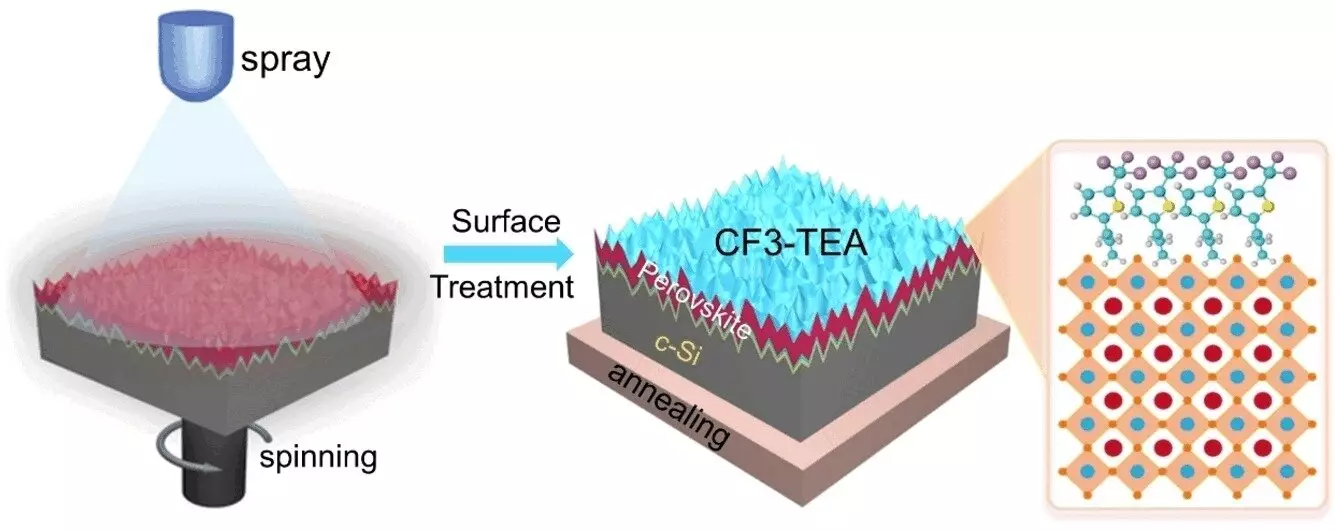Solar energy has been gaining momentum as a sustainable and renewable source of power. One of the key components of solar panels is the solar cells, which convert sunlight into electricity. A recent study published in the journal Angewandte Chemie International Edition presents a promising new approach to enhance the efficiency of solar panels while reducing costs. The research team has developed a coating for solar cells using special organic molecules that could revolutionize the way we harness solar energy.
Tandem cells have been developed to maximize the absorption of sunlight and improve the overall efficiency of solar panels. These cells are composed of two different semiconductors that can capture different wavelengths of light. In particular, a combination of silicon and perovskite has shown great potential in tandem cell technology. Silicon is known for its ability to absorb red and near-infrared light, while perovskite excels in utilizing visible light. By combining these two materials in a monolithic structure, researchers aim to create highly efficient solar panels that can utilize a wider spectrum of sunlight.
Traditionally, silicon wafers used in the manufacturing of solar cells are expensive and produced through complex processes. However, a more cost-effective alternative involves using silicon wafers with microstructured surfaces, which are produced using the Czochralski process. These textured surfaces have been shown to enhance light capture by reducing reflection. Despite these advantages, the process of coating these textured wafers with perovskite presents challenges such as the formation of defects in the crystal lattice. These defects can hinder the transfer of electrons and lead to reduced efficiency and stability of the solar cell.
To address the issue of surface defects in perovskite layers on textured silicon wafers, a team of researchers has developed a new strategy involving surface passivation. By applying a thiophenethylammonium compound with a trifluoromethyl group (CF3-TEA) using a dynamic spray coating process, the researchers were able to create a uniform coating that effectively smooths out surface defects. This coating not only suppresses nonradiative recombination but also adjusts electronic levels to facilitate the transfer of electrons within the solar cell. As a result, perovskite/silicon tandem solar cells coated with CF3-TEA achieved an impressive efficiency of nearly 31% while maintaining long-term stability.
The development of this surface passivation technique opens up new possibilities for the mass production of efficient and affordable solar panels. By leveraging the benefits of common textured silicon wafers and organic molecule coatings, solar panel manufacturers may soon be able to improve the performance of their products while reducing production costs. This breakthrough not only has the potential to make solar energy more accessible to a wider range of consumers but also contributes to the global shift towards clean and sustainable energy sources. As research in this field continues to advance, we can expect even more innovative and impactful solutions to emerge, shaping the future of solar energy technology.


Leave a Reply